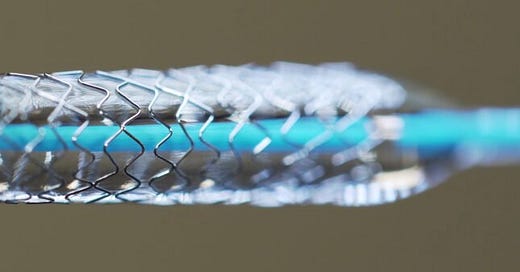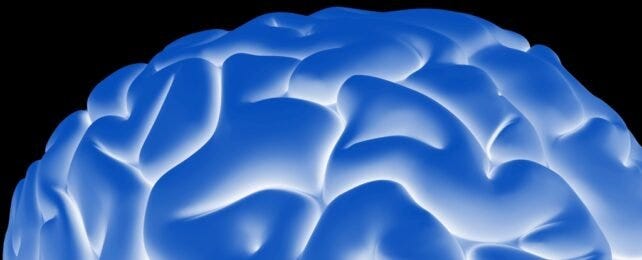Sci-Ed Update 303
Genetics of faces, not all physical activity helps, science's fake paper problem, stents finally beat placebo, diets to treat kidney disease, extra cerebral fold delays dementia, fix your A&P course
Doctors Complete First Successful Face and Whole-Eye Transplant

This week doctors announced they had completed the first successful transplant of a partial face and an entire eye. In May at NYU Langone Health in New York City, the surgery was performed on a 46-year-old man who had suffered severe electrical burns to his face, left eye and left arm. He does not yet have vision in the transplanted eye and may never regain it there, but early evidence suggests the eye itself is healthy and may be capable of transmitting neurological signals to the brain.
The feat opens up the possibility of restoring the appearance—and maybe even sight—of people who have been disfigured or blinded by injuries. Researchers caution there are many technical hurdles before such a procedure can effectively treat vision loss, however.
Read more→ AandP.info/oat
An 'Extra Fold' in The Human Brain May Delay Early Dementia by Years
People diagnosed with frontotemporal dementia usually die within eight years of their diagnosis. While around 30% of cases are inherited, the cause of frontotemporal dementia is largely unknown. This also means there are no cures available or treatments to slow its progression.
But recent research, [the author has] published with colleagues at Lund University, may have brought us one step closer in our understanding of how frontotemporal dementia develops and progresses. We discovered that the way your brain looks may determine your resilience to the condition.
The folds that form early in foetal development are found in both sides of the brain in every person. But there's one fold that sometimes develops later on in the process. It's called the paracingulate sulcus – and not everyone has it. In those that do have it, it can either be present on just one side of the brain or both sides.
The paracingulate sulcus is interesting, as its presence can make a significant difference to cognitive ability. For example, research has shown that people with a left but not a right paracingulate sulcus have a cognitive advantage – performing better on tasks involving control and even memory.
Read more→ AandP.info/jwg
The One Teaching Strategy That Will Fix Your Anatomy & Physiology Course
In episode 143 of The A&P Professor podcast for anatomy and physiology faculty, host Kevin Patton uncovers the super-secret, single, ultimate teaching strategy you need to keep your course tuned up and effective. He also revisits the “out there” transducer model of the brain and suggests a connection with a recent discovery supporting quantum wave activity in brain cell microtubules. Yes, quantum waves in the microtubules. Kevin also clarifies and expands on those wacky “extra” courses he described in Episodes 140 and 141—that’s where the quote in the graphic above originates.
00:00 | Introduction
00:51 | Clarifying Kevin’s Wacky Supplemental Courses
15:50 | Quantum Activity in Brain Microtubules?
28:15 | Could There Be More Than One Strategy?
34:29 | The TAPP Hotline
35:11 | There Really Is Only One Strategy
48:00 | Staying Connected
To listen to this episode, click on the play button above ⏵ (if present) or this link→ theAPprofessor.org/podcast-episode-143.html
A Diet Could be as Powerful as a Drug Treatment for Kidney Disease
Can diets be modified to treat disease? In some cases, the answer may be yes. New research has determined that people who consume a ketogenic diet can improve kidney function in a type of kidney disease. This disorder, called hereditary polycystic kidney disease (ADPKD), causes an estimated ten percent of all cases of kidney failure.
Read more→ AandP.info/g9h
After decades in use, heart stents finally beat placebo. It took a bold researcher
A new study, and the bold doctor who led it, could result in big questions about how researchers study medical devices and surgical treatments and, eventually, what procedures patients undergo.
It starts with coronary angioplasty, one of the most common procedures in medicine, performed hundreds of thousands of times a year in the U.S. alone. A balloon catheter is snaked up into a clogged artery in the heart and expanded to open the blood vessel. It leaves behind a metal scaffold, called a stent, that is used to prop the artery open.
In people who have just had a heart attack, this can be lifesaving. But frequently angioplasty is used mainly to relieve chest pain, or angina. And though this use dates back decades, angioplasty and stents have never passed the basic test any new pill for relieving symptoms has to clear: outperforming a placebo in a clinical trial where patients were blinded, meaning they don’t know whether they got the treatment or not.
Read more→ AandP.info/q78
How big is science’s fake-paper problem?
Software will help publishers to detect fake articles produced by paper mills. Credit: Getty
The scientific literature is polluted with fake manuscripts churned out by paper mills — businesses that sell bogus work and authorships to researchers who need journal publications for their CVs. But just how large is this paper-mill problem?
An unpublished analysis shared with Nature suggests that over the past two decades, more than 400,000 research articles have been published that show strong textual similarities to known studies produced by paper mills. Around 70,000 of these were published last year alone (see ‘The paper-mill problem’). The analysis estimates that 1.5–2% of all scientific papers published in 2022 closely resemble paper-mill works. Among biology and medicine papers, the rate rises to 3%.
Read more→ AandP.info/pcy
Not All Exercise Is Beneficial: The Physical Activity Paradox Explained
In the pursuit of optimal health, regular physical activity (PA) is recommended to protect against dementia, cardiovascular disease (CVD), cancer, and other noncommunicable diseases. A significant body of research suggests the benefits of PA are positively correlated with higher frequency and intensity — with more often deemed better. This research has spawned a focus on increasing step counts and investing in standing desks and other interventions aimed at keeping people active.
But for many people, PA is a work requirement over which they have little control, and emerging evidence suggests that these workers not only do not reap the benefits associated with leisure-time PA, but they also actually experience an increased risk for the very conditions that PA is intended to prevent.
A study published recently in The Lancet Regional Health – Europe used registry data from more than 7000 adults in Norway, following them from age 33 to 65 years, to assess PA trajectories and risks for later-life mild cognitive impairment (MCI) and dementia at age 70 or older.
Read more→ AandP.info/vzj
Untangling the genetics that underlie our facial features
When Eric Mueller, who was adopted, first saw a photograph of his birth mother, he was overcome by how alike their faces were. It was, he wrote, “the first time I ever saw someone who looked like me.” The experience led Mueller, a photographer in Minneapolis, into a three-year project to photograph hundreds of sets of related people, culminating in the book Family Resemblance.
Such resemblances are commonplace, of course — and they point to a strong underlying genetic influence on the face. But the closer scientists look into the genetics of facial features, the more complex the picture gets. Hundreds, if not thousands, of genes affect the shape of the face, in mostly subtle ways that make it nearly impossible to predict a person’s face from examining the impact of each gene in turn.
As researchers learn more, some are starting to conclude that they need to look elsewhere to develop an understanding of faces. “Maybe we’re chasing the wrong thing when we’re trying to create gene-level explanations,” says Benedikt Hallgrímsson, a developmental geneticist and evolutionary anthropologist at the University of Calgary, Canada.
Instead, Hallgrímsson and others think they may be able to group genes into teams that work together as the face forms. Understanding how these teams work, and the developmental processes they affect, should be much more manageable than trying to sort out the effects of hundreds of individual genes. If they’re right, faces may turn out to be less complicated than we think.
Read more→ AandP.info/4ti









